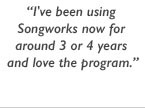
See Eberhard Knobloch, “Harmony and Cosmos: Mathematics Serving a Teleological Understanding of the World,” Physis 32 (1995): 55–89.ĭaniel P. See Eberhard Knobloch, “Musurgia Universalis: Unknown Combinatorial Studies in the Age of Baroque Absolutism,” History of Science 38 (1979): 258–275.

126–144, and Section 6 in this Introduction. Walker, Spiritual and Demonic Magic from Ficino to Campanella (London: The Warburg Institute/University of London, 1958), pp. 10.įabio Paolini, Hebdomades sive Septem de Septenario libri (Venice: Francesco dei Franceschi, 1589) see Daniel P. 20 Gioseffo Zarlino, Le Istitutioni harmoniche (Venice:, 1558), p. See my review of Inner Music in Annals of Science 53 (1996): 642–644. Hobbes, Hooke and North on Internal Character (London: Athlone, 1995). The minor sixth 8/ 5, not contained in the senario, is perceived by Zarlino as made up of the fourth 4/3 and the minor third 6/ 5, while the embarassment of the presence of the number 8 is countered by the argument that the 8 is two times 4 and hence potentially, even if not actually, contained in the senario. See, also, Section 6 of the present Introduction. 8: “The forms of the consonances and other intervals that we use in our times in vocal and natural compositions are not products of art nor inventions of man but primarily of nature itself¡ They are then ordered and rediscovered by art in the species that I call and shall always call natural, named syntonic diatonic by Ptolemy” (trans. Gioseffo Zarlino, Sopplimenti musicali (Venice: Francesco de’ Franceschi Sanese, 1588), p. Palisca, Humanism in Italian Renaissance Musical Thought (New Haven and London: Yale University Press, 1985), pp. Aristotelis de obiecto Auditus¡ (Venice: Vincentius Valgrisius, 1562) see Claude V. Ptolemaei Harmonicorum, seu de Musica lib III. 741.Īntonio Gogava, trans., Aristoxeni Musici antiquiss. Palisca, entry “Theory, theorists,” The New Grove Dictionary of Music and Musicians, 20 vols. This process is experimental and the keywords may be updated as the learning algorithm improves.Ĭlaude V. These keywords were added by machine and not by the authors. and since they saw further that the properties and ratios of the musical scales are based on numbers, and since it seemed clear that all other things have their whole nature modelled upon numbers, and that numbers are the ultimate things in the whole physical universe, they assumed the elements of numbers to be the elements of everything, and the whole universe to be a proportion or number. And since numbers are by nature first among these principles, and they fancied that they could detect in numbers, to a greater extent than in fire and earth and water, many analogues of what is and comes into being.

The so-called Pythagoreans applied themselves to mathematics, and were the first to develop this science and through studying it they came to believe that its principles are the principles of everything.


 0 kommentar(er)
0 kommentar(er)
